Related Research Articles
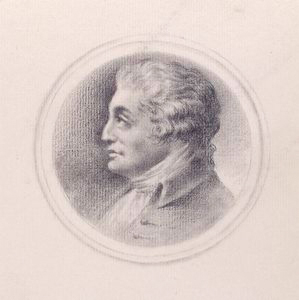
Gioacchino Cocchi was a Neapolitan composer, principally of opera.
This is a list of music conservatories in Naples, Italy.
Claudio Casciolini was an Italian composer.

Cataldo Vito Amodei was an Italian composer of the mid-Baroque period who spent his career in Naples. His cantatas were important predecessors to the active cantata production of 18th-century Naples, and he stands with the elder Francesco Provenzale and younger Alessandro Scarlatti as among the principal Italian cantata composers. Other surviving works include a book of motets dedicated to Leopold I, Holy Roman Emperor; a serenata; two pastorales; two psalms; and four oratorios, which were important contributions to their genre.
Salvatore Agnelli (1817–1874) was an Italian composer. He was born at Palermo, studied at the Naples Conservatory, under Furno, Zingarelli, and Donizetti.
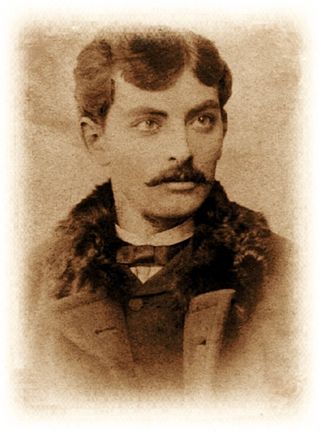
Francesco Paolo Frontini was an Italian composer. He studied music with his father, composer Martino Frontini; he also studied the violin with Santi D'Amico, playing a concert with him at the town concert hall at the age of 13. At 15 his first composition, a Qui tollis, was played at the city cathedral, under the direction of Pietro Antonio Coppola. In 1875 Frontini matriculated at the Palermo Conservatory, where he studied with Pietro Platania; from there he passed to the conservatory in Naples, where he received his diploma in composition under the tuition of Lauro Rossi.

Guglielmo Zuelli was an Italian composer, conductor, and music educator. As a composer he achieved fame for his first opera Fata del Nord which premiered in Milan in 1884. Both his first and second opera, Mokanna o Il profeta del Korasan, were published by Casa Ricordi. However, his second opera has never been performed. His other compositions consist of several sacred choral works and a number of symphonic pieces written in a style similar to his contemporaries Giacomo Puccini, Alberto Franchetti, and Pietro Mascagni.

Francisco Ruiz de Castro y de Sandoval-Rojas, was a Spanish nobleman and politician the 8th count of Lemos.
Luciano Sgrizzi was an Italian harpsichordist, organist, pianist and composer.

Giulio Confalonieri was an Italian musician, musicologist, composer and musical critic.
Giovan Gualberto Brunetti was an Italian composer.

Nicola d'Arienzo was an Italian composer, music pedagogue, and writer on music. He spent his entire career in his native Naples where all but one of his nine of his operas were premiered. His other compositions included instrumental music, sacred music and art songs. From 1909 until 1911, d'Arienzo served as the director of the Conservatory of San Pietro a Majella having taught there since 1875. He also wrote several books on the history and theory of music.
Pietro Giuseppe Gaetano Boni was an Italian composer.
Francesco Beretta was an Italian organist, composer and Kapellmeister and a predecessor of Paolo Lorenzani - a pupil of Orazio Benevoli - at the Cappella Giulia of St. Peter.
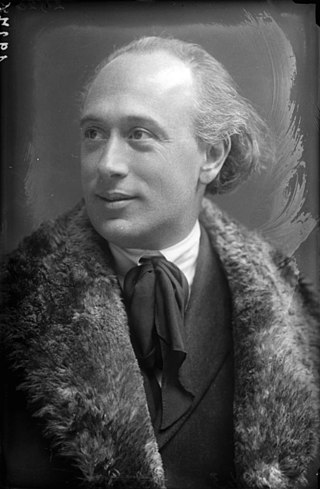
Attilio Brugnoli was an Italian composer, pianist and musicologist.
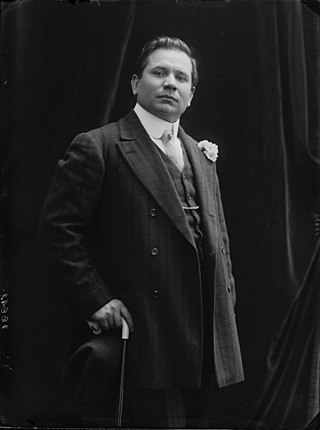
Amedeo Bassi was an Italian tenor.

The Conservatorio Statale di Musica Giuseppe Verdi, also known as the Conservatorio Giuseppe Verdi or Conservatorio Torino and more commonly known in English as the Turin Conservatory, is a music conservatory in Turin, Italy. It should not be confused with the Milan Conservatory or Como Conservatory; schools which have also been known as the Conservatorio Giuseppe Verdi.
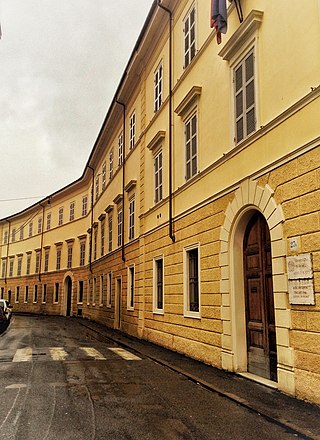
The Conservatorio di Musica Arrigo Boito, better known in English as the Parma Conservatory, is a music conservatory in Parma, Italy. It was originally established as the Regia Scuola di Canto, a school for singing in 1819 by Marie Louise, Duchess of Parma, and expanded into a conservatory of music in 1825. In 1840 instrumental music instruction began, followed by the addition of music composition, conducting, and other musical studies.
Federico Mompellio was an Italian musicologist, music editor, music librarian, and music critic. He worked as a music librarian and professor of music history at several conservatories and universities during a lengthy academic career that began in 1933 and extended into the 1980s. As a scholar, he is best remembered for his biographies of the composers Niccolò Paganini and Sigismondo d'India. He also worked extensively as a music editor on the works of Paganini for the music publisher Casa Ricordi, most notably reconstructing Paganini's Violin Concerto No. 5; a work which was unknown until manuscripts were discovered in 1972 long after the composer's death.
Francesco Maria Marini was an Italian composer of early Baroque music. Associated with the music of San Marino, only a single work of his survives, the 1637 collection Concerti spirituali concertati a 2–7 et con instrumenti, libro 1.
References
Citations
- 1 2 3 4 5 Paolo Emilio Carapezza and Giuseppe Collisani (2001). "Palermo". Grove Music Online. Oxford University Press. doi:10.1093/gmo/9781561592630.article.20745.
- ↑ Daita, p. 3
- 1 2 3 4 Daita, p. 4
- 1 2 Weinstock, p. 43-44
- 1 2 3 Daita, p. 5
- 1 2 Sauro Rodolfi (2020). "ZUELLI, Guglielmo". Dizionario Biografico degli Italiani. Vol. 100. Treccani. Archived from the original on 2023-10-30. Retrieved 2023-11-03.
- ↑ Maione, p. 4
- 1 2 Roberto Zanetti (1985). "Rito Selvaggi". La musica italiana nel Novecento. Vol. 2. Bramante. p. 989.
- 1 2 Anthony M. Cummings (2015). "PIRROTTA, Antonino". Dizionario Biografico degli Italiani. Vol. 84. Archived from the original on 2023-10-30. Retrieved 2023-10-11.
- ↑ "Il Conservatorio cambia nome: intitolato al compositore palermitano Scarlatti". Palermo Today (in Italian). 17 September 2018. Archived from the original on 17 September 2018. Retrieved 2 November 2023.
- ↑ Maffioletti, Chiara (2023-06-06). "Chi è Aura Eternal, la drag queen di Palermo laureata in conservatorio che sta conquistando il mondo". Corriere della Sera. Archived from the original on 2023-07-25. Retrieved 2023-07-25.
- ↑ Elizabeth Forbes (2001). "Alaimo, Simone". Grove Music Online. Oxford University Press. doi:10.1093/gmo/9781561592630.article.41891.
- ↑ W. B. Henshaw (2003). "Carlo Bellandi". Biographical Dictionary of the Organ. Bardon Music. Archived from the original on 2023-10-14. Retrieved 2023-11-03.(subscription required)
- ↑ Franco C. Ricci (1969). "BONA, Pasquale". Dizionario Biografico degli Italiani. Vol. 11. Archived from the original on 2023-10-30. Retrieved 2023-11-03.
- ↑ "Bonafede Salvatore". Conservatorio Bellini Palermo. Archived from the original on 24 September 2017. Retrieved 27 February 2019.
- ↑ ""Un'orchestra a 6 corde", in arrivo l'atteso concerto del chitarrista Francesco Buzzurro". Messina Today. October 18, 2023. Archived from the original on November 3, 2023. Retrieved November 3, 2023.
- ↑ Giacomo Romano Davare (2014). Il potere e l'anima. Thule. p. 90.
- ↑ Gazzola, Luiz (26 August 2013). "The Exclusive Opera Lively Interview with Ginger Costa-Jackson". Opera Lively. Archived from the original on 28 August 2013. Retrieved 21 September 2013.
{{cite web}}: CS1 maint: unfit URL (link) - ↑ Paola Rosa (1998). "Frontini, Francesco Paolo". Dizionario Biografico degli Italiani. Vol. 50. Treccani. Archived from the original on 2023-10-30. Retrieved 2023-11-03.
- ↑ Robert Bagar, Louis Biancolli (1947). The Concert Companion. Tomaso Antonio Vitali. p. 809.
- ↑ Antonio Trudu (2001). "Giuranna, (Elena) Barbara". Grove Music Online. Oxford University Press. doi:10.1093/gmo/9781561592630.article.11236.
- ↑ Bernard Jacobson, revised by Richard Wigmore (2001). "Guadagno, Anton". Grove Music Online. Oxford University Press. doi:10.1093/gmo/9781561592630.article.11887.
- ↑ "MATTEO MANCUSO – THE INTERVIEW". Velvet Thunder. August 13, 2023. Archived from the original on November 3, 2023. Retrieved November 3, 2023.
- ↑ Leonardo Pinzauti (2001). "Marinuzzi, Gino (i)". Grove Music Online. Oxford University Press. doi:10.1093/gmo/9781561592630.article.17814.
- ↑ Sinopie Consonanze. Giuseppe Monterosso e il Filarmonico Concerto Municipale di Aci Catena.1908-1912 ¤ 1922-1945. Dal Meriggio al Tramonto (1948-1978). I maestri Fontana, Minissale e Ausino, Supino, Pagine lepine, 2022, p. 18.
- ↑ Alfredo Casella, revised by John C.G. Waterhouse (2001). "Mulè, Giuseppe". Grove Music Online. Oxford University Press. doi:10.1093/gmo/9781561592630.article.19305.
- ↑ Careri, Enrico; Donisi, Enrica (2015). Prima e dopo Cavour: La musica tra Stato Sabaudo e Italia Unita (1848-1870). Atti del Convegno Internazionale Napoli, 11-12 novembre 2011. FedOA - Federico II University Press. p. 95. ISBN 9788888904191. Archived from the original on 2023-11-03. Retrieved 2023-11-03.
- ↑ "Lunedì classico in libreria, il concerto sulle note di Chopin e Liszt alla Feltrinelli". Palermo Today. March 11, 2019. Archived from the original on September 18, 2021. Retrieved November 3, 2023.
- ↑ "Giovanni Sollima- Composer Information". Counterpoint Music Library Services. 2012. Archived from the original on November 3, 2023. Retrieved October 9, 2023.
- ↑ Pagano, Roberto (2000). "Ziino, Ottavio". Enciclopedia Italiana . Vol. VI. Treccani. Archived from the original on 2023-04-04. Retrieved 2023-11-03.
- ↑ "Betta, Marco". Istituto della Enciclopedia Italiana fondata. Giovanni Treccani. 2015. Archived from the original on 2022-10-28. Retrieved 2023-11-03.
- ↑ Raoul Meloncelli (1980). "CESI, Beniamino". Dizionario Biografico degli Italiani. Vol. 24. Treccani. Archived from the original on 2022-11-06. Retrieved 2023-11-03.
- ↑ Julian Budden (2001). "Cilea, Francesco". Grove Music Online. Oxford University Press. doi:10.1093/gmo/9781561592630.article.05780.
- ↑ Fabio Fano, revised by Roberta Costa (2001). "Fano, (Aronne) Guido Alberto". Grove Music Online. Oxford University Press. doi:10.1093/gmo/9781561592630.article.09288.
- ↑ Nicola Balata (1995). "Favara, Alberto". Dizionario Biografico degli Italiani. Vol. 45. Treccani. Archived from the original on 2022-11-16. Retrieved 2023-11-03.
- ↑ Fabio Antonini (1997). "Floridia, Pietro". Dizionario Biografico degli Italiani. Vol. 48. Treccani. Archived from the original on 2022-06-14. Retrieved 2023-11-03.
- ↑ "Riccardo Minasi" (PDF). Festival Bach de Lausanne. Archived (PDF) from the original on October 11, 2023. Retrieved October 20, 2023.
- ↑ Emiliano Giannetti (2011). "MOMPELLIO, Federico". Dizionario Biografico degli Italiani. Vol. 75. Treccani. Archived from the original on 2023-10-30. Retrieved 2023-10-11.
- ↑ "ENRICO ONOFRI ARION BAROQUE ORCHESTRA". KA Magazine. November 27, 2014. Archived from the original on June 1, 2023. Retrieved November 3, 2023.
- ↑ "Premiato il pianista catanese Gianfranco Pappalardo Fiumara". LiveSicilia. July 4, 2023. Archived from the original on November 3, 2023. Retrieved November 3, 2023.
- ↑ Antonio Trudu (2001). "Pilati, Mario". Grove Music Online. Oxford University Press. doi:10.1093/gmo/9781561592630.article.21758.
- ↑ Jesse Rosenberg (2001). "Raimondi, Pietro". Raimondi, Pietro. Grove Music Online. Oxford University Press. doi:10.1093/gmo/9781561592630.article.50122.
- ↑ J.A. Fuller Maitland (2001). "Scontrino, Antonio". Grove Music Online. Oxford University Press. doi:10.1093/gmo/9781561592630.article.25239.
Bibliography
- Gaetano Daita (1873). R. Collegio musicale del Buon Pastore in Palermo. Stablimento Tipigrafico LAO; held in The British Library.
- Orazio Maione (2005). I conservatori di musica durante il fascismo: la riforma del 1930, storia e documenti. EDT Srl. ISBN 978-88-6040-019-2.
- Weinstock, Herbert (1963). Donizetti and the World of Opera in Italy, Paris and Vienna in the First Half of the Nineteenth Century. New York: Random House.